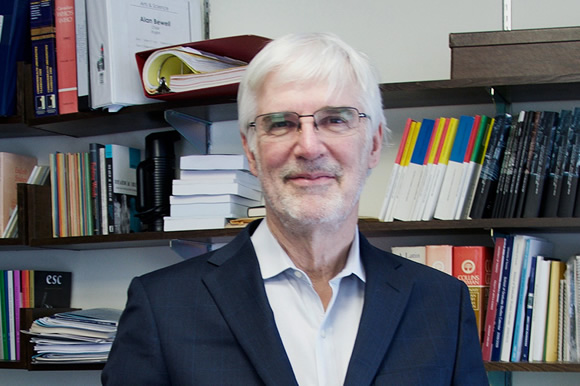The Department of English has seen entirely new areas of study — world literature in English, children’s literature, Native North American literature and the digital text — added to the curriculum in past decades. Even courses with the most traditional titles – think Shakespeare or the Victorian novel — are regularly assessed and improved.
Alan Bewell looks ahead to how English will change — and stay the same — over the coming years.

Alan Bewell
Chair, Department of English
Words shape worlds
English remains a field committed to considering how words shape worlds, how reading, writing and communication have changed over time, and the role that various kinds of fiction — call it the imagination, if you will — help us to make sense of ourselves and others in the world.
At the same time, research in English is changing rapidly.
English faculty may continue to do research in specific periods and fields, but now they often do so from an interdisciplinary perspective, studying how texts are informed by and inform science, music, law, medicine, economics, geography, or politics.
Research on sexuality, gender, diversity and race
New fields of study have also developed. Since human beings have been reading books for more than 600 years, it was easy, up until recently, to take the historical and cultural practice of reading books for granted. When, however, it appeared that book reading might be nearing its end, the Department of English was in the vanguard of establishing the internationally recognized Book History and Print Culture program to explore what books mean to us, our complicated attachments with them, and why we should not, even cannot, live without them. Research on sexuality, gender, diversity, race continue to shape faculty research, while digital research and a new commitment to comparativism have gone beyond traditional boundaries to explore the global dimensions of English both in the past and in the contemporary world.
Re-thinking what is meant by “human”
What many of the new fields of research in English share in common is an urgent commitment to rethink what is meant by the “human.” Something like a Copernican revolution is underway, aimed at continuing to decentre human beings so that we will be able to reconceptualize our relationship to the world.
In ecological criticism, there is a new post-humanism afoot, one that seeks to rethink who we are so that we can become more integrated with the natural world and our urban environments. Animal Studies has emerged as a cutting edge field, focused on reconceptualizing how we understand ourselves and our relationship to the non-human world around us.
Thing Studies has redefined what we mean by agency, suggesting that things are as much agents acting in the world as people. Equally important in this regard, has been the influence of Affect Theory, which explores how we are connected to the world not by our ideas, but by our bodies, particularly through affects, emotions, and feelings.
Reading in new ways
As we seek to find ways of thinking about ourselves that connect rather than separate us from people, animals, and things, digital research is replacing highly individualistic modes of reading focused on the depths of a text with “big data” and distanced reading focused on surfaces. At one time, the goal of most English professors was to teach their students to see the figurative dimensions of a poem, novel, or play, and not to read texts literally. That was before a new turn toward literal reading, which seeks to cross the gap between the sciences and humanities by recognizing that great works of literature are best appreciated when we learn how to read things literally.
This is a very exciting time in English studies at the University of Toronto, as we seek to prepare our students for the future by developing modes of research that respond to the world around us and that seek to extend our thinking beyond individual texts and authors to grasp better what we share with other beings — both human and nonhuman — across time and space.

